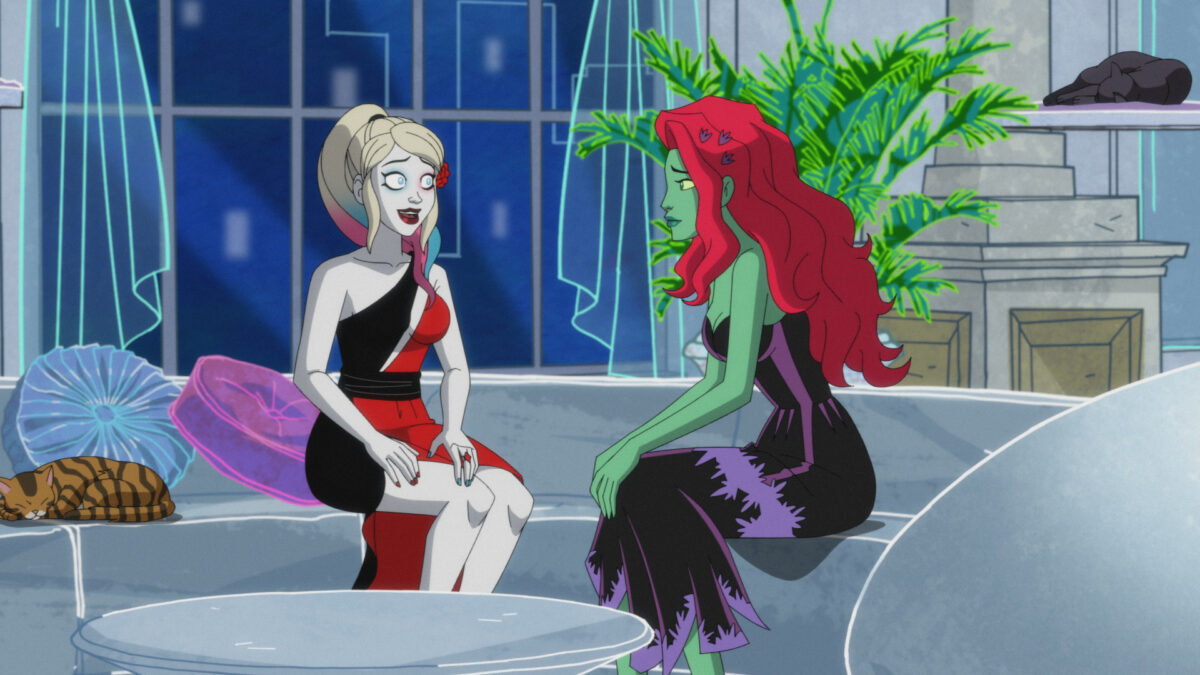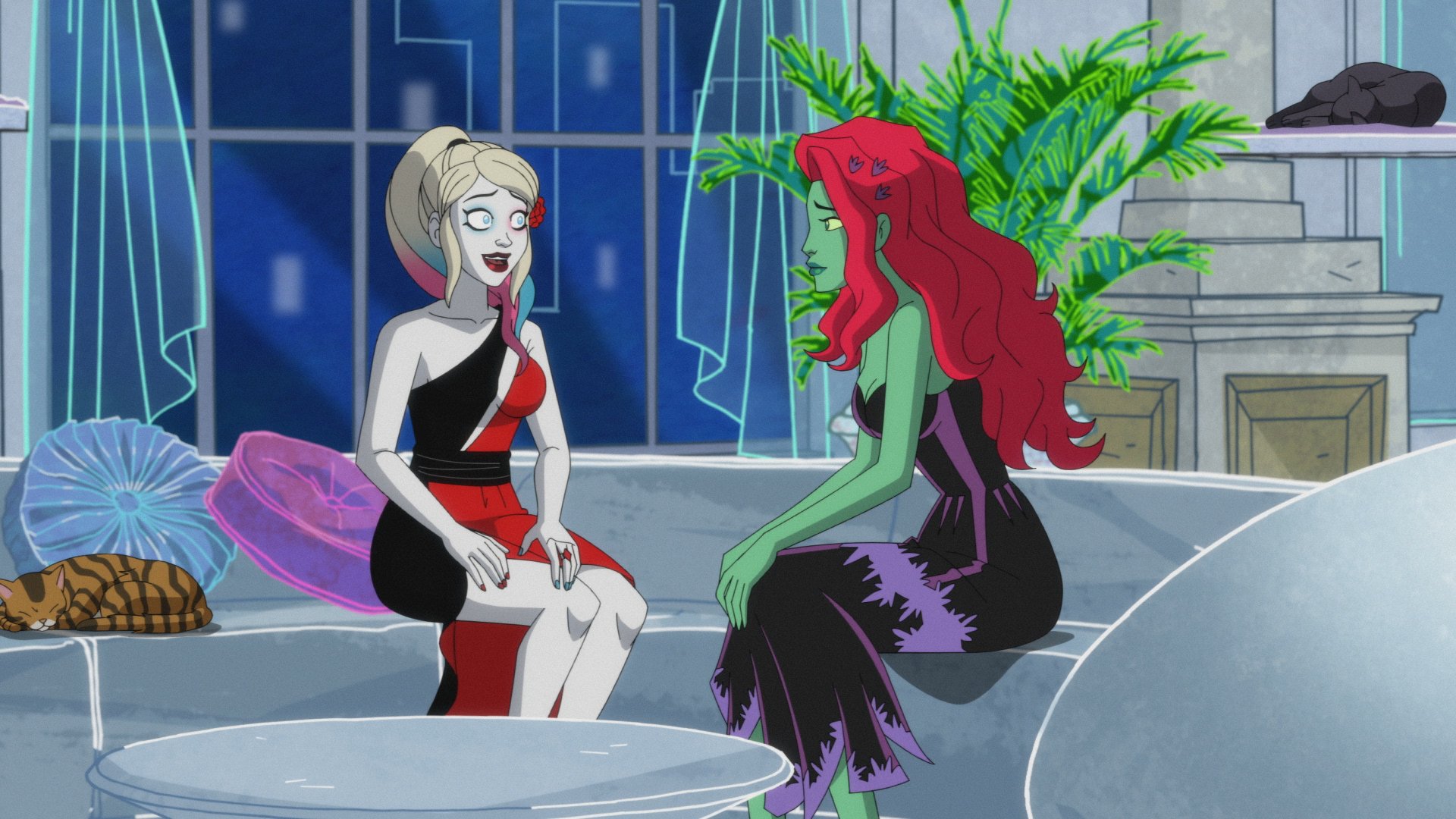
***SPOILER ALERT: This post discusses the plot points of the season 3 finale.***
The superhero genre has many strengths, but romance isn’t one of them. Sure, there are plenty of shippable pairings and OTPs in comics, but it’s hard to find long-lasting, functioning relationships amongst superheroes and supervillains. The reasons are obvious: ever-changing writers, editors, and creative mandates continually reshuffle our favorite titles with reboots and cancellations. There is inherent narrative drama in relationship tumult and break-ups. And of course, there’s the long legacy of fridging (usually female) characters to spur our heroes into action/give them emotional depth. And let’s be real: relationships are hard enough without secret identities, vengeful enemies, and the constant threat of apocalypse.
But it doesn’t have to be that way. HBO Max’s animated comedy Harley Quinn spent its third season developing the Harlivy relationship into one of the best, most healthy pairings currently on television. The series premiere saw Harley dumping Joker once and for all, ditching DC’s most toxic relationship to strike out on her own. She has the support of her best friend Poison Ivy as she establishes her own crime syndicate/found family and seeks entry into the Legion of Doom. Season 2 deepened the Harlivy relationship, as the two develop romantic feelings for one another. The season ended with ivy ditching Kite Man at the altar and running off with Harley.
Season 3 finds the duo enjoying their Eat Bang Kill tour, but the honeymoon phase as quickly over as they return to Gotham and put their relationship to the test. The series smartly addresses Harley’s co-dependency and desperate need to please her partner, along with Ivy’s own reticence to commit. But Harlivy handles their relationship challenges with understanding and open communication. It’s a welcome bit of evolution for both characters, as they embark on what may be the first functional romantic relationship of both of their lives.
Their issues come to a head in the final two episodes, as Ivy connects with the Green and uses zombies to terraform Gotham during the Jazzapajizza jazz festival (the repeated use of the word Jazzapajizza and Ivy’s love of jazz remains one of my favorite running jokes of the series). All season, Harley has struggled with supporting her girlfriend’s villainous ambitions while not wanting Gotham destroyed. When Harley gets infected by a zombie, Ivy reverses her takeover to save her, but remains bitter over seeing her dreams dashed. While most series would use this divide as a cliffhanger, Harley Quinn spends its season 3 finale repairing the Harlivy divide, as the two come clean and accept one another. Harley reveals that while she loves and supports Ivy, she no longer wants to be a villain. And being the compassionate partner that she is, Ivy is okay with Harley’s change of heart. Instead of destroying Gotham, Ivy takes a job as the head of the Legion of Doom (offered to her by Lex Luthor), while Harley joins the Bat-family and continues to provide therapy for Bruce Wayne. Both women remain supportive and loving of each other’s goals, even if those goals may be diametrically opposed. Not only does this provide a new honest framework for Harlivy going forward, but it offers up the potential for plenty of narrative drama in its upcoming fourth season.
Each season of Harley Quinn levels up, in its humor, artistic style, and narrative ambitions. And with the showrunners assuring fans that Harlivy will never break up, the series has the opportunity to delve more into the best comic book relationship on television.
Harley Quinn is currently streaming on HBO Max.
(featured image: HBO Max)
—The Mary Sue has a strict comment policy that forbids, but is not limited to, personal insults toward anyone, hate speech, and trolling.—
Have a tip we should know? [email protected]
